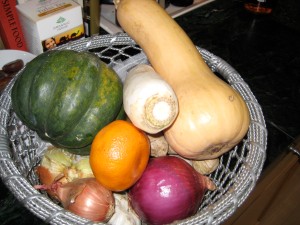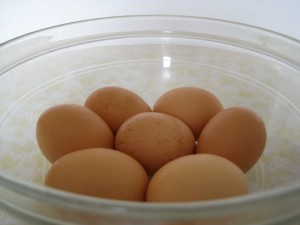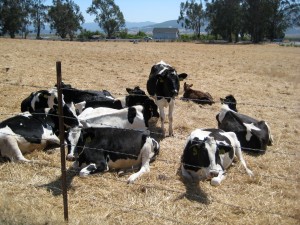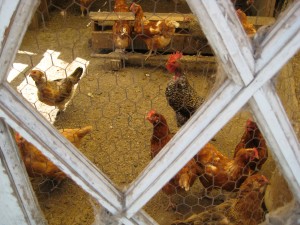The search for truly rich and delicious eggs has been quite a little journey. It began well over a year ago, and since then I have searched grocery stores, farmer’s markets, roadside signs, and private farms. And while I did find some amazing eggs, nothing sparked the A-ha, Eureka, I’ve Found it! moment. The eggs that have come the closest are from two local farms, Tomatero Farm in Watsonville, CA and Soul Food Farm in Vacaville, CA. Both farms feature their extremely good eggs in some of the highest end, sustainability-focused restaurants such as Nopa, Chez Panisse, Coi, and Frances.
Yet still, something was lacking. The richest orange-yolk shades continued to elude me. And the prices (usually around $7/dozen) were seriously straining my struggling writer / wine-slinger budget. So what’s a bona-fide egg fanatic to do? Crazy as it sounds, we decided to go straight to the source. Well, actually, we brought the source to us.

Yes, we decided to keep chickens. Pretending we were living in the country and not country-club adjacent, we picked up 6 precious little chicks at Rivertown Feed Store in Petaluma, CA, and hand-raised them until they were old enough to start producing their own easter egg-colored beauties. We were so excited about the whole process of caring for the ladies, we failed to document anything and preserve the experience for friends, readers, and our future reminiscing selves.


So this spring, when we were feeling adventurous again, we decided to add to our little flock and raise four new peeps (so dubbed for the adorable yet incessant sound they constantly emit.) And this time, I swore we would spend more time with them and document as much as possible, so that in a few months, we have more than just incredible eggs and big squawking chickens to show for it.
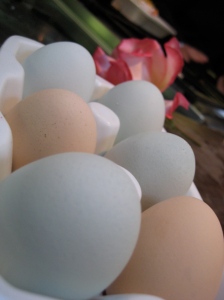
While to many people this this may be a ridiculous or overly precious endeavor, I think even more people are inspired by the idea of keeping chickens, as evidenced by the huge, though mostly undocumented, growth in raising backyard chickens. The benefits are many, and the hassle, work, and expense involved are not burdensome. It’s a hobby of sorts, but one that promises a sustainable, healthy, and humane way to involve ourselves with a key element in our food sourcing. Modern writers and thinkers have long been lamenting the lack of direct connection we have with our food and our land — keeping chickens is a revolutionary way of reconnecting with both.

Plus, they are super-cute.




